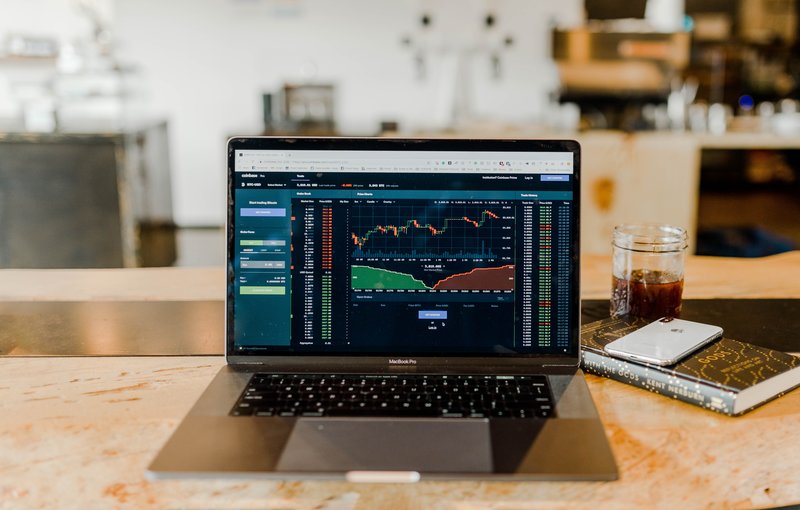What should investors do when market is at its historic lows

The outbreak of Coronavirus pandemic over the last 2 months or so has sent shockwaves through financial markets across the world. The pandemic has rapidly spread outside China over the last one month and infections have multiplied in many countries including India.
Stock markets in major economies have cracked with Dow Jones and S&P 500 falling 11 – 12%. Emerging markets like India have seen bigger corrections, with the Nifty falling more than 25% in just 1 month. The $2 Trillion fiscal stimulus package announced by the US Government has prevented the markets going into a tailspin and we have seen recovery from the lows over the last 5 – 6 days, but on a year to date basis Nifty is still down -30%.

Source: Yahoo Finance, Moneycontrol, as on 31st March 2020
Nifty at historic low
The chart below shows the Nifty movement over the last 10 years. The dotted red line represents the current level of Nifty. This is the lowest the Nifty has been in the last 5 to 6 years - Nifty has fallen to the level where it was in the last quarter of calendar year 2014.

Source: National Stock Exchange
Rebound from lows
In the past, we have seen strong rebounds from market lows. In 2011 the market fell by 28%. From the low in November 2011, the Nifty gave 22.7% CAGR returns over the next 3 years.
Similarly in 2015 – 16, the Nifty fell by 22%. From the February 2016 low, the Nifty have 16% CAGR returns over the next 3 years.
Suggested reading: Why it is a right time to invest in equity mutual funds
We have stated a number of times in our blog that it is extremely difficult to time the markets, but deep corrections such as the one we are seeing now are great buying opportunities from a long term investment perspective.

Source: National Stock Exchange
Valuations are multi-year low
Nifty valuation looked expensive at the start of this year but the meltdown the market has brought valuations substantially down. Nifty is currently trading at Trailing Twelve Months (TTM) PE multiple of 18 – 19 times earnings. The chart below shows the historical Nifty PE multiples over the last 10 years. The average PE multiple of Nifty has been around 22. Nifty traded at nearly 30 times at the higher end of the valuation range and at around 15 times at the lower end. Nifty is currently trading at 18 – 19 times earnings, closer to the lower end of the range. This should be an attractive investment opportunity.

Source: National Stock Exchange
The red dotted line represents the current Nifty PE multiple. The last time we saw these valuation levels was back in 2012 – 14. Let us see how much wealth you would have created over a five year investment horizon if you invested at these levels. The chart below shows how much your investment grew over next 5 years if you invested Rs 1 lakh in January 2012, 2013 and 2014 respectively in the Nifty.

Source: National Stock Exchange, Advisorkhoj Research
You can see that in all the three cases your investment would have grown to Rs 1.7 – 1.75 lakhs at a CAGR of 12%. Just to put this in perspective of Nifty long term returns, 10 year Nifty CAGR return from 1st January 2010 to 1st January 2020 was 8.8%. You can see that by investing cheaper valuations you get a substantial kicker to your returns.
Should you invest in lump sum or SIP?
We have stated a number of times in our blog that, one should invest through SIP for their long term goals. Unless you have very long investment horizons, lump sum involves more risks than SIPs. However, deep market corrections provide the ideal opportunity for investing in lump sum. The history of past bear markets and subsequent recoveries indicate that this is a good time to make lump sum investments.
You may like to read – How mutual fund systematic transfer plans help invest in volatile markets
Increase your SIP amounts
If you do not have lump sum funds available, you should continue to invest through SIP and if possible, consider increasing your monthly SIP amounts. Since prices have fallen considerably, you will be able to buy many more units at low prices and thereby reduce your average cost of acquisition considerably. This can generate excellent returns for you in the long term. There is a lot of uncertainty in the market due to continuing high growth of Coronavirus infections and its impact on the economy due to lockdowns enforced by Governments around the world including India. Therefore, we expect market to remain volatile in the near term and through SIP you can take advantage of volatility through Rupee Cost Averaging of purchase price.
Suggested reading: How to get the most from your mutual fund SIPs and Mutual Fund SIPs and Power of Compounding
Conclusion
Coronavirus is the worst crisis the world has faced in many decades. While the economic outlook is uncertain, the deep correction in the market has created attractive investment opportunities for investors. The age old mantra of success in stock markets is buying low and selling high - investments made in bear markets give the highest returns in the long term. The on-going correction is a good opportunity for investors to create substantial wealth over a long term investment horizon.
Mutual Fund Investments are subject to market risk, read all scheme related documents carefully.
RECOMMENDED READS
LATEST ARTICLES
- Importance of staying invested in the choppy market
- Two new promising smart beta funds: Nippon India Nifty 500 Low Volatility 50 and Nifty 500 Quality 50 Index Funds
- Going hybrid in the current environment
- Asset allocation is key to long term investing: Hybrid funds make a lot of sense in current market conditions
- Should you invest in momentum funds: Why momentum works in investing
The information being provided under this section 'Investor Education' is for the sole purpose of creating awareness about Mutual Funds and for their understanding, in general. The views being expressed only constitute opinions and therefore cannot be considered as guidelines, recommendations or as a professional guide for the readers. Before making any investments, the readers are advised to seek independent professional advice, verify the contents in order to arrive at an informed investment decision.
Mutual Fund investments are subject to market risks, read all scheme related documents carefully.
Quick Links
Follow Nippon India MF
More About Nippon India MF
POST A QUERY




